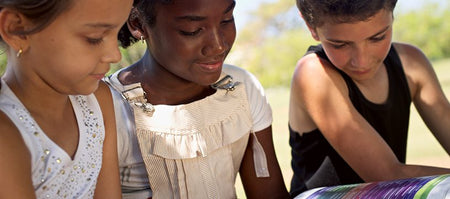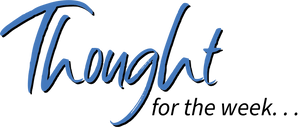
Just about everyone feels the pressure to accelerate learning in the final weeks and days of the school year. Too many students have fallen behind, and we feel the urgent need to catch them up. Of course, we can focus on key concepts and skills and let less crucial aspects of the curriculum go for now to save time and energy for learning crucial content. We are also working hard to reestablish and renew relationships, sustain a supportive environment for learning, and create an emotionally safe space for students who need to finish transitioning to in-person school.
In this context, it can be tempting to turn to increased homework to fill gaps and reduce reinforcement and practice time while we are face to face with students. While on the surface relying on homework to “take up some of the slack” may seem worthwhile, it may be a less effective strategy than we assume.
While there is little research on what impact homework had on remote learning during the pandemic, there is significant research on its effectiveness as a strategy associated with in-person learning. The findings point to limited learning benefits and some significant downsides that should give us pause, especially now. In short, if homework is designed and positioned correctly, it can increase student motivation to learn, but poorly designed and positioned homework can lead to decreased interest and commitment. Let’s examine some of the potential downsides of relying heavily on homework, especially now.
First, the greatest learning benefits come from the homework students complete, not from the amount of homework assigned. The key is to design homework students can and will complete. Attention must be given to how realistic, interesting, useful, and doable homework will be from the students’ perspective. We may think what we’re asking students to do is valuable, realistic, and achievable, but if students can’t or don’t do the work, learning will not be the result.
Second, when homework involves practicing new concepts and skills while students are still uncertain, confused, or hold misconceptions regarding what to practice, homework can actually work against learning. We risk having students repeat errors and increase their confusion while doing homework intended to support their learning. When this is this case, more assigned homework will cause more learning damage. And when students practice and reinforce misconceptions, it takes even longer to correct problem areas and more effort for students to relearn correctly.
Third, too much homework can diminish its benefits. Once students reach a point where the work has reinforced their learning and created confidence, more practice has not been shown to increase achievement. As a general guideline for high school students, homework requiring about an hour to an hour and a half per night is optimal. For middle school students, the greatest benefits are found in homework requiring less than an hour. For elementary students, if homework is assigned at all, it’s best for the time required for completion to be even less. To be clear, the optimal times reflect total homework time, not the time required per class. Collaboration among teachers and administrators is crucial to avoid overloading students with homework and diminishing any benefits.
Fourth, homework can have a different impact on students depending on their home circumstances and learning skills. Students who have adequate background knowledge to successfully engage in the work often find homework an easy task. But students without this advantage can find the time necessary to complete homework is as much as double what’s required for more advantaged students. Further, when homework requires access to resources not provided by the school, expectations for homework completion at home may not be realistic. The implications of these disparities grow and become more serious when homework is scored and used for grades. Students who actually give more effort and invest more time in completing homework can be penalized—while classmates with support and access to resources are rewarded with better grades. These homework practices can actually increase achievement gaps and inequities.
Homework, if carefully designed and thoughtfully assigned, can reinforce learning and provide opportunities for practice and application. However, we need to be attentive to the potential risks and downsides it presents. If homework is going to be among the instructional strategies on which we rely as we finish the year, we need to employ it judiciously and in limited amounts.

Overcoming a Crisis in Confidence
The coming weeks are a crucial time for learning. We want students whose learning has lagged over the past months to catch up. The end of the year will soon be here and expectations for learning growth for many students have not been met. Special efforts are underway to accelerate learning and ensure that students gain the skills and learn the content they will need when school opens again in the fall. For many, this summer will be a time for classes and study rather than leisure and relaxation.
Yet, aiming our focus on instruction and content coverage alone will not be a recipe for success. Regardless of how diligently we teach, students must be ready to learn. They are a key piece of the success puzzle. Certainly, many students who have been learning remotely are ready to return to in-person learning and engage in whatever learning lies ahead.
At the same time, a large group of students have found learning during this past year to be more difficult than in previous ones. They struggled to focus and had difficulty sustaining learning efforts, especially when they felt stuck. Too often they did not have the learning support that used to sustain them when they struggled. Their grades have fallen and, in some cases, they face the possibility of failing.
As adults, we can see that the learning conditions they’ve faced have likely contributed heavily, if not fully, to the situations in which these students find themselves. For students, the situation is not necessarily as clear. As a result, many have come to doubt their learning potential and skills. What used to come fairly easily no longer does.
What has been lost is their confidence. With loss of confidence comes greater reluctance to take learning risks. Why try if failure is the likely outcome? Learning persistence also dissipates with loss of confidence. Why continue to struggle if I do not believe I will succeed? It can be less painful to be chided for not trying than to be exposed as not capable. What these students face is as much a crisis in confidence as a crisis in learning.
What can we do to help students rebuild their confidence and move past this crucial learning barrier? Here are seven strategies to tap:
- Demonstrate confidence in our students. If we are convinced that our students will succeed and we consistently communicate our belief in them and their capacity to be successful, our confidence will “rub off.” It is much easier to take risks when important people around us are confident that we will succeed.
- Focus on small successes. Confidence grows with successful experiences. Learning activities at which students can succeed can get them started. We can also design these activities to tell us what students know and may be ready to learn next.
- Set goals with students. Conversations about goals can offer great opportunities to share our confidence and challenge students to reach higher. If students feel as though they are part of the goalsetting process, they are also more likely to take ownership and make greater efforts to succeed. As goals are met, we can reinforce with students their capability and potential.
- Coach students to recall and recount their successes. Confidence grows as we feel successful. Self-talk plays a key role in how successful students feel. By coaching students to remember and relive their successes, they can counter negative, confidence-undermining narratives. Of course, they occasionally need us to point out and remind them of their successes and areas of strength.
- Discourage students from comparing themselves and their performance with others. Comparisons to others who may be moving faster or doing better can undermine confidence even though another student may be in a very different situation. What matters most is for the student to concentrate on his or her own learning and progress. It is also the only element students can control.
- Remind students that effort and occasional struggle are an important part of learning. In fact, learning that comes easy is often forgotten just as easily. When students have to concentrate and make multiple attempts, we can remind them that they are experiencing a natural part of the learning process.
- Enlist students in keeping track of their progress. When students submit assignments, turn in tests, and complete assessments solely for our attention and recording, it can be easy for them not to be aware of their progress. Yet, documenting and tracking progress can be highly motivating and confidence-building. We can design monitoring tools and strategies that position students to monitor their progress, in addition to our records. This information also can be helpful when progress begins to slow, and students need additional coaching and nudging to get back on track.

Time for Renewing Relationships and Making New Connections
It may seem strange to be thinking about relationships and connections at this time of the year, but this is not a normal year. It’s true that the end of the school year is not that far away. Normally, our focus might be on sustaining the momentum we have built with students over the course of many months together. We might be planning special events and breaks in routines to create excitement and build motivation for the final push.
Yet, this is a time when many students are returning from months of remote and hybrid learning. They are navigating changing learning environments. They may be meeting classmates in person for the first time all year. Many students are nervous about once again learning in the physical presence of others. Some are likely wondering whether they will fit in, if they will still be friends with classmates from the past, and if their learning is on pace to be successful as they return to in-person learning.
These are issues that we should not ignore in our efforts to address areas and aspects of academic learning that have lagged for many students. We are not likely to achieve success with students if they are not feeling comfortable with peers, confident in their relationships, and assured of our care and support for them.
As much as we might be tempted to press forward in our efforts to address missing skills and shore up areas of weakness, we need to make it a priority to address emotional needs and build connections with and among our students if we hope to have a successful ending to the year. Here are five ideas and activities you can use to create the conditions and culture your students need to do their best learning now.
If your students are returning to in-person learning after being physically separated, use icebreakers to initiate personal conversations and share stories. The icebreakers might involve recounting experiences while remote learning, sharing hopes and concerns regarding the return to face-to-face classes, discussing plans for new activities and opportunities that lie ahead, or other topics that will build connections among students. As students learn more about each other, friendships will form and renew, and feelings of connectedness will emerge. Importantly, creating time for and facilitation of these activities will also communicate to students that their feelings and experiences matter to you.
Take time to connect personally with each student. It may be a warm greeting upon entry to the classroom, a comment about something they shared during an icebreaker, or something positive you have noticed. The key is to communicate that you notice and care about the student as a person. The more you notice and communicate your interest and support, the more comfortable and connected your students will feel.
In the coming weeks, carve out time to engage in conversations with your students about their transitioning experience as it unfolds. Your interest in their experiences will further communicate that you care. Equally important, you may learn about challenges and barriers students are facing that you may not have been aware of or considered. Alternatively, you can receive feedback on what is working well and might be expanded to successfully move the process along. Be alert for students who do not share or who make superficial contributions. It may be that there is more to learn from these students, but they are reluctant to speak in a group setting. A brief follow-up check-in may be what is needed.
Look for opportunities to give students responsibilities and opportunities to lead activities within the classroom. Whether taking digital notes to share with the class, being a timekeeper for small group discussions, summarizing a discussion, or other activities, the more students share in the operation of the class, the more ownership and connectedness they are likely to experience. Feeling needed, having responsibilities, and being a part of something larger than ourselves can be highly motivating and build strong connections.
Be alert to the activities, engagements, and successes of students beyond the classroom and let students know you notice. The pandemic may still be limiting some opportunities for students, so the more you notice and comment on, the more meaning your attention will carry. Sending a short note, text, or email or making a brief verbal comment is all it takes. You will be communicating that you notice and you care. There are few messages that are more powerful.

Do’s and Don’ts for Finishing the Year Successfully
We are reaching the time of year when the end will soon be in sight. Meanwhile, for many students this a time of transition back to in-person learning after many months, or even a year, of remote learning. These factors and others will add complexity to lives and learning in the coming weeks. We need to be conscious of how the experiences of students may influence their perceptions and behavior in the transition back and respond with sensitivity and patience.
We also may feel pressure to “catch students up” in the weeks that remain, wanting to avoid feelings of guilt if students have not been exposed to the full grade level or course curriculum. Time may feel short and pressure may be intense to make full use of what remains of the year. We need to use the time wisely, but we also need to realize that learning is what matters most. Our priorities need to reflect what we can do with the time and resources available so we don’t become overwhelmed and panic.
To help us think about how we can negotiate our way through the coming weeks, here are some do’s and don’ts to consider.
Don’t:
- Ignore the emotional and psychological injuries and scars experienced by students. Just because students are happy to be back in classrooms does not mean the pain and distraction of family members they have lost, family conflict they experienced, and other myriad issues now are gone. They may be pushed down or set aside for now, but the feelings will resurface and need to be addressed eventually. We need to stay alert for signs of trauma and the needs of some students for attention and support.
- Assume that everything remaining in the curriculum must be covered. In a normal year we may be able to engage students with the full scope of the curriculum. However, this is not a normal year. We may feel as though we must “cover” the full curriculum if we are to meet expectations of us, but what matters most is not coverage. It is learning. In the weeks remaining, our time and the time of our students will best be spent focusing on what they know and what is essential for them to learn.
- Underestimate your role in helping students find their way in learning and life. Students need to feel stability, support, and care, especially now. When we provide a calm, engaging, and purposeful environment, we give students assurance that they can focus on learning. When we give students opportunities to explore, investigate, problem-solve, set goals, and take risks, we offer the autonomy and ownership students need to grow toward independence and “way finding.”
- Give in to resentment or resort to blaming. Like our students, our lives were disrupted, we experienced loss, and we were deprived of celebrations and connectedness. This could be a time when our emotions turn dark, and we look for who to blame for our loss and resent the sadness we experienced. However, our energy and attention will benefit us far more if allocated toward what we can do going forward. How can we make the future better? What have we learned that we can take with us? What can we do to improve the lives of others?
- Assume that life will return to the “old normal.” We and our students have experienced much in the past months. Our students are not the same and neither are we. Expecting life to be what it was prior to the pandemic will likely lead to disappointment. Now is the time to focus on what we can create. We can build on what we have learned, retain what is valuable from the past, and create a future that is worthy of becoming our normal.
- Share your confidence in your students and their ability to thrive beyond the pandemic. Students need to know that we are there for them, especially now. So much has happened that brought uncertainty and confusion into their lives. They need to feel our belief in them, our reassurance and support, and the stability it creates in their lives.
- Focus on purposeful content and useful skills. We can connect what students are asked to learn with the purpose their learning will serve. We can give students opportunities to apply their learning where practical and support them to use their new learning to develop new insights. Where possible we can encourage and support students to use what they learn to create and share with others. Learning is most fun and satisfying when it leads to something meaningful and opens doors to creativity.
- Reinforce with students the value and importance of what they have learned, including what is not in the curriculum and will not be on a formal test. Our students learned many skills and developed an array of habits that helped them to survive, and even thrive, during the pandemic. However, many of the most crucial things they learned will not show up on a test or be included in an academic grade. Organization, prioritizing, managing time, solving resource problems, and mastering technology tools are just a few examples. We need to honor and reinforce these skills and habits as key tools for future success.
- Take time to build community and nurture a culture of inclusion, connectedness, and acceptance. It has been said that “we all have experienced the same storm, but we were not all in the same boat.” Some students will need more time and space to deal with their experiences and feelings of loss. Others may be ready to move forward with less support. We need to be there to respond and support and to marshal the support of peers to help everyone succeed.
- Give students time to make the transition. Some of our students may resist too much direction and close supervision. They have experienced levels of flexibility and autonomy that they value and may not want to give up without reason. Other students may struggle with non-stop school for the entire day, when they have been free to move around and take breaks in other learning settings. We need to be thoughtful about expectations, restrictions, routines, and consequences as students return to learning in the physical presence of others.

Pose Four Questions to Improve User Experiences for Learners
Successful enterprises are committed to ensuring their clients and customers have positive user experiences when they interact or access services. They know that the more positive and satisfying the experience, the more committed the client or customer is likely to be when they seek similar services in the future.
Schools have traditionally not spent much time or energy focused on providing high quality, satisfying user experiences for students. The assumption has often been that learning is a necessary task and what is to be learned has already been determined. The experience will not always be pleasant and satisfying. The priority has been on providing high quality instruction, not satisfying user experiences.
Of course, prior to the pandemic, most students had not been exposed to formal learning contexts other than face-to-face. They had little context for judging one learning experience from another beyond variances among teachers and instructional styles. The pandemic has exposed students to multiple contexts while continuing to feature variations among teacher styles and approaches.
It is also true that students are not yet mature and may not always be able to judge the experiences that are in their best interests. However, multiple studies have shown that students can be relatively accurate judges of what is good teaching and what makes a positive user experience for them.
Now is a good time to consider exploring what makes a good user experience from the learners’ perspectives. Since adjustments will be necessary even without user input, why not include the perspectives of learners as we design the new normal for learning?
We can collect information through focus groups, interactive surveys, one-on-one interviews, and in a number of other ways. However, students need to be convinced that we are ready to listen and consider what they have to offer. Perfunctory questionnaires and sessions where adults do most of the talking or become defensive will not unearth the information needed.
Regardless of the specific format you choose, here are four questions you can pose to get the conversation started:
- If you were a customer of this school rather than a student, what advice or guidance would you offer to make your experience here more positive and satisfying? Be ready for responses that have little to do with the curriculum. You may not even receive much initial input on instruction. Students are likely to begin with social and environmental issues. Listen closely and note what you hear. Follow up with prompts to address classroom and learning experiences and educator practices and relationships.
- What did you learn from the multiple settings for learning (face-to-face, hybrid, remote) this past year that you believe is important as we plan for next year? Again, you may need to use some prompts and probes to help students reflect on and recollect what they experienced that is important. Urging students to compare and contrast their different experiences may help them to discern what is notable and should be retained.
- What was your best learning experience from the past year? What happened, when did it happen, and what made it special? Students may find this question easier to answer, but the responses may initially be superficial. If so, be ready to narrow the question and allow time for students to reflect.
- If you were to describe to another student who does not attend this school what is best about being a student here, what would you tell them? Placing this question in the context of advising another student can make it more concrete and real. In many cases, students have likely given similar advice to friends, relatives, and neighbors who are not enrolled in your school, so they may be ready with ideas and answers without much probing.

Four Crucial Conversations We Need to Have With Students
Adults are busy making plans and designing programs to support students as they transition to what will become the new normal for their learning. In the near term, assessing student progress, planning strategic interventions, and positioning students for academic success in the fall may need to take precedence over some other activities.
Certainly, these preparations are important, but we must be careful not to discount or ignore the importance of engaging students so they can understand and make sense of what is happening to and around them. Students will be making decisions too. They will decide whether to give their commitment and energy in response to the expectations we present and activities we plan. They will decide whether they feel safe and connected. If we fail to engage them in ways that build reassurance and confidence, much of the planning we do will have little impact.
In the coming weeks, there are at least four conversations we need to have with students. Each of the conversations can help students to gain a healthy and useful perspective on what lies ahead and provide reassurance that they will be safe and can succeed.
First, we need to engage students in conversations about their learning and help them to build their learning path. We know that many students found learning during the pandemic to be challenging. Disruptions, transitions, and shifting conditions made learning focus and consistency difficult to maintain. Consequently, we need to have thoughtful conversations with students about the status of their learning. Appearing to blame and punish students for lack of progress and threats of retention and remediation risk making the situation worse. So many students experienced so much loss over the past year. Adding the burden of “catching up” risks unwarranted feelings of guilt that will undermine motivation and confidence at a time when students most need to commit to their learning and focus their energy. Rather, we need to work with students to focus on the next levels and most crucial areas for learning now and begin to build a path forward with students to guide their learning and provide support to help them see success as within reach.
Second, we need to spend focused time with students helping them to identify and appreciate skills and knowledge they have gained that may not be measured; learning that was “off the books.” Survival and success for many students during the pandemic required them to learn and perfect skills to support themselves during remote learning and other settings. Skills such as resilience helped students to bounce back and keep trying, even when they were discouraged. Organization, prioritizing, problem-solving, and other aspects of self-management helped students to keep their learning going even when their teacher was not present and other students were not immediately available to consult. Knowledge of how to use technology tools and applications grew significantly. These skills may not be on the standardized or diagnostic assessments students will be asked to take in coming weeks, but if valued, recognized, and reinforced as students transition between learning environments, these skills can be accelerators for future learning success.
Third, we need to engage our students in conversations about transitioning to the new normal. Students across the nation spent much of the past year in learning environments where norms and other behavioral expectations were not the same as they would have experienced in a traditional classroom. They likely experienced greater freedom of movement, more choices regarding the use of their time, and more control over their attention and activities. Classroom procedures were also modified and consequences for unacceptable behavior were adjusted from what might have been experienced during in-person instruction. We need to help students to understand how learning activities and expectations will be different and why. We may need to be flexible to allow students time to adjust, but we also need to be aware of traditional in-class expectations that we may need to adjust or abandon. Crucial to this conversation is our listening to how students are perceiving and responding to the transition. Some students may find the experience to be more traumatic than we expect.
Fourth, we must have conversations with students about their physical and psychological safety. Most students understand that the disruptions and restrictions of the past year were due to physical safety concerns. As students return to in-person learning, we need to discuss with them how their learning environment is being kept safe. Some steps are obvious. Physical distancing, learning cohorts, masks, and open windows all communicate responses to the potential dangers of the virus. However, we also need to talk with students about how these measures help keep them safe, even though some practices may be awkward and uncomfortable. We also need to help students to feel safe emotionally and psychologically. Many students will feel anxious about engaging with others and renewing friendships or making new friends. We need to help students to feel connected and included in the classroom. They need to feel noticed and respected. This is a crucial time to design activities and structure routines that build a culture of safety and inclusiveness.
Obviously, there is much to be done to prepare for the coming summer and opening of a new school year. However, we need to prioritize engaging students in important conversations about their experiences, fears, and plans if we hope to gain their commitment and build toward their success.
Share Your Tips & Stories
Share your story and the tips you have for getting through this challenging time. It can remind a fellow school leader of something they forgot, or your example can make a difficult task much easier and allow them to get more done in less time. We may publish your comments.
Send Us An Email

Not All Learning Is Equal in Summer Catch-Up
Educators and school administrators across the country are busy developing plans, structuring programs, and designing instruction for crucial summer learning experiences. Some activities may focus on helping students to recover credits they failed to earn. Other experiences may be aimed at developing specific skills and content with which students have struggled. Still others may target broader learning activities to help students to reengage and ready themselves for the start of a new year.
Regardless of the particular areas of focus, it is important to ask ourselves what type of learning we are seeking. Should we set the low bar of meeting minimum requirements to award a credit, even if learning is minimally gained and quickly lost? Or are we seeking to build significant learning that students will retain and have access to in the months and years to come? Do we want students to accept instruction and cooperate? Or do we want to build ownership and flexibility in learning skills that students can use to build future learning?
Our intentions and goals matter because each of these types of learning suggests a different set of learning activities in which students will engage. Let’s consider four types of learning experiences and how we might design activities that make each form of learning a likely outcome.
First, and at a relatively low level of learning, is receptive learning. In this experience students are expected to listen, follow directions, practice, and respond with evidence of having received the information presented. Students may memorize content, use mnemonic devices to capture lists or steps in a process, or they may take notes to study as a means of repeating back what has been presented to them. While this type of learning experience can position students in the short term to pass quizzes and perform satisfactorily on exams, the learning is often isolated in students’ minds and is not deep or easily retained. Consequently, it may not be accessible in the future and learning that is intended to build on receptive learning can be challenging.
A second type of learning is an integrating experience. This learning goes beyond isolated facts and memorized processes to connect with prior learning. Students are coached and encouraged to tap what they already know to make sense of and understand the significance of what they are learning. Integrated learning is typically retained for a longer time than receptive learning and students are likely to be able to access this learning to support future learning challenges and tasks. However, students may not necessarily be able to easily apply integrative learning in settings and for purposes other than what students experienced in the original learning context.
The third type of learning moves to the next level and supports students in applying what they are learning in new and less familiar contexts. Beyond memorizing a process and connecting to prior learning, this experience provides students with opportunities to solve problems, perform tasks, and interpret information using what they are learning. Learning at this level drives understanding to deeper levels and positions learning for long-term retention and access. Educators have often considered this level of learning as an ultimate outcome. While ensuring that students can apply new skills and knowledge in settings other than where the learning occurred is useful and important, in today’s world it is also important to move to yet another level of learning to fully prepare students for their future.
The fourth, and most empowering, level of learning involves experiences that encourage and support students to engage in creating something new with what they are learning. When students use new learning to discover new solutions, develop novel approaches, and imagine new applications, they move from receiving and integrating what they are taught and applying what they have learned to generating something that they own. Confidence grows and risk-taking becomes exciting. These creative activities can be as simple as having students develop problems to solve, tasks to complete, and design learning experiences that depend on what students have learned. Or students may mine their learning for insights, understandings, and applications beyond what has been presented to them through instruction. What students create can be simple and straight forward or complex and challenging. The key is to give students opportunities to move beyond being told and shown to designing and creating by using what they now know.
Of course, summer learning experiences will need to address a variety of needs and serve many interests. However, in every setting we need to give students rich learning experiences. They deserve opportunities to nurture ownership for their learning and maximize the length of time they will retain it. Our ultimate goal needs to be empowering students to do all they can do with the learning they gain.

Adopt Four Assumptions to Fuel Summer Learning Success
Lack of learning progress appears to be a near universal concern among administrators and teachers as we enter the final quarter of the school year. Disruptions, distractions, and disinterest are blamed for lower grades, increased course failures, and other indicators of diminished academic success. Attention is now shifting to how to catch students up and counter learning loss.
Educators across the nation are hurriedly designing summer classes, bootcamps, academies, and other summer instructional activities to counter what they see as learning deficits. However, one thing is clear: Doing more of what hasn’t worked, or not worked well enough in the past, will not result in better outcomes now. The truth is that traditional summer school structures and approaches have generally not been effective at improving academic outcomes. In fact, world-renowned researcher John Hattie has documented traditional summer learning experiences as among the few educational practices that may actually counter learning progress.
In light of the urgency to make a difference for students and the challenges associated with making meaningful learning progress with students who have fallen behind, where can we turn to find useful tools to guide our design of learning experiences for the coming summer? Among the most powerful design elements reside in the assumptions we make about learners and learning. If we design and plan based on powerful, learning-supportive assumptions, we are far more likely to create experiences for students what will meet their learning needs and accelerate their learning progress. Here are four key assumptions on which the design process can rest.
Assumption #1: Learning starts where the learner is. The best place to start is with what learners know rather than what they don’t know. For the most part, new concepts, skills, and knowledge will be connected to and build on what students already know, regardless of whether they learned it in school. We need to take the broadest view possible when we explore what students already know. Administering a standardized test alone is unlikely to provide all the information needed. When we confine our search to narrow academic content and skills, we are likely to miss some of the most important insights, skills, and knowledge students already possess, but may be embedded in non-academic contexts. Understanding a student’s life outside of school can provide useful hints and starting points to surface prior knowledge and stimulate connections that otherwise may be overlooked. This observation is even more crucial for students who have spent a good portion of the past year outside of traditional classrooms.
Assumption #2: Relevant, meaningful learning is most effective. Most important learning in the lives of students is driven by purpose. When instruction connects to students’ experiences, goals, and interests, they are most likely to learn. Understanding what is important, interesting, stimulating, and even provoking for learners can be a starting point for connecting to what they see as relevant and tapping what may be meaningful. The key is to manipulate what is to be learned rather than manipulating the learner. For example, gamifying certain content and skills can make them more attractive and position students to make learning them a goal they willingly choose and ardently pursue.
Assumption #3: Learning can be stimulated in multiple ways. Designing summer learning experiences based on the assumption that instruction alone will be adequate is not likely to be successful. Engage students in activities that generate curiosity, stimulate imagination, and support exploration. Consider giving students access to interesting text that they can and want to read. Create activities in which students will want to participate that also develop intended skills. Direct instruction can and should be a part of the mix, but if we depend too heavily on explicit instruction and ignore other learning stimulators and drivers, we can expect learning to slow, retention to diminish, and success to be small.
Assumption #4: Students are most likely to succeed when we believe in their ability. When we believe in the probability of success, we provide more targeted and supportive feedback, try more options, offer more authentic encouragement, and focus more on strengths than deficiencies. Success is expected and communicated. We are more likely to see mistakes and missteps as evidence of learning acquisition than as proof that success is not likely. Interestingly, some of the most powerful messages we send to students about our belief in the probability of their success is not communicated via our words. They are embedded in our non-verbal behaviors. Every sigh, every glance, and every shrug communicates what we believe about whether a student is going to succeed. Trying to fake it is not a good strategy.
For many students, the learning they experience this summer will likely be determinative of their success in the coming year. We need to do all that we can to get it right. Starting with the right assumptions and designing experiences that place the learner and learning at the center is the best approach to ensure our students experience the success we want for them.

How You Use Time Matters More Than How Much You Have
Recent data on slowed learning growth and increased percentages of failures during the pandemic has schools across the country searching for ways to increase time. The theory of action is that if students have more time to receive instruction, they can make up learning growth and get back on track.
At first glance, this theory seems to make sense. After all, learning takes time, so more time must be the answer. However, an experiment tried by Washington D.C. schools presents a cautionary example of why such an approach may fall short.
A few years ago, D.C. Public Schools added twenty days to the school calendar on 13 of its lowest performing campuses. The increase meant that over the course of time these students spent in school up until eighth grade, they would add the equivalent of an additional year. The idea was simple. They expected that students in these struggling schools would benefit from having more time to learn. Test scores would improve, and the schools would become more successful. After three years the school district collected performance data for each school and discovered there was little evidence of any academic improvement. Attendance rates remained low, and reports of teacher burnout grew (Stein, 2019).
The fundamental flaw in the theory of action was assuming that just adding time would result in more learning. We cannot assume that doing more of what is not already working will somehow make it work better.
There was no evidence that the students involved were incapable of learning. Nor was there evidence that the teachers were incapable of or not committed to teaching. The problem was not the people.
This is not an argument that time doesn’t matter. However, adding time without changing instructional strategies and learner experiences offers little promise of improvement. As we think about efforts and initiatives to help students get back on track, we would do well to ask how the time that is available can be used to address the reasons for slippage in the pace of learning. We need to focus on how we might engage students in ways that lead to acceleration and recovery. Here are some ideas to consider.
We can start by reestablishing and reinforcing our relationships with students. This year has been one of isolation and loneliness for many students. Try as we might, we have not always been able to maintain strong, positive, influential relationships with many of our students, nor have they always been able to maintain relationships with each other. Now is a good time to refocus on relationships.
We can design learning experiences and opportunities that learners find attractive and engaging. Most educators and students are exhausted, especially with the often awkward and inefficient teaching and learning context we have experienced. What students find interesting and worth doing can be a good place to begin. Community-based experiences, gamification of content, and project and problem-based activities can offer the connections students find worthwhile, while also learning academic content.
In areas of learning where students need to fill skill and knowledge gaps, we can focus on essentials. We can design experiences that are focused and efficient while looking for hooks and pulls to engage students. Resorting to instructional strategies and structures that did not work the first time hold little promise of producing different outcomes now.
As much as practical, we can cluster students with classmates who are friends and acquaintances they may have missed if they spent the past year in remote instruction. Recreating familiar learning groups and clusters can reduce awkwardness and increase social support. We can also employ social learning strategies such as having students work in pairs, groups, and teams as they learn.
Of course, we need to begin learning and instructional activities in response to learner readiness. We do little to stimulate and build learning confidence and skills when we ask students to learn what they are not ready to learn or lack adequate background knowledge and skills in to be successful.
Stein, P. (2019, February 21) District eliminates extended school year, invests more in classroom technology. The Washington Post. https://www.washingtonpost.com/local/education/district-eliminates-extended-school-year-invests-more-in-classroom-technology/2019/02/21/e9478500-3484-11e9-a400-e481bf264fdc_story.html

Pandemic Learning: Loss, Lagging, or Latent
A disheartening number of media reports, political assessments, and even some educational leaders use the label “learning loss” to describe the impact of conditions present during the pandemic. Taken at face value, learning loss implies that widespread student learning has regressed. Yet, we know that the vast majority of students have continued to make progress over the past year. Of course, the progress has not always been what is expected in light of the pace of learning these students have demonstrated in the past or compared to what is envisioned in standard face-to-face curriculum.
The fact is that learning loss is generally confined to a relatively small number of students who failed to be present in school, remote or in-person, over the past year. They received little if any instruction and were able to realize little to no new learning. Long periods of absence from learning environments have likely left these students with some level of learning loss because the learning they gained previously was not used or reinforced.
These are tragic circumstances. We need to do everything within our power to locate and reengage these students. However, it is a mistake to describe the state of learning or plan recovery strategies for most students based on the situation in which a minority of students find themselves.
In reality, many students have struggled with remote, hybrid, and in-person learning as a result of disruptions and distractions that competed for their attention during the pandemic. However, they have continued to make progress. There are elements and aspects of their learning that have not developed as quickly or completely as expected. These students need support to fill in areas where their learning has been lagging in the past months. They do not need to be retaught much of what they knew prior to the pandemic. They also do not need to spend significant time and energy on concepts and skills they were able to learn despite the situational challenges they faced. These students are more likely to need targeted intervention to bring them back to a place and pace where they can find success going forward.
Still another group of students has been able to keep their learning on pace, or maybe even accelerated, despite the disruptions and uncertainty surrounding their learning environment. Remarkably, many of these students experienced learning beyond the curriculum and explicit instruction. They may well have gained latent learning that has gone unnoticed and unrecognized. They have gained skills that can propel them forward. They have developed interests and areas of expertise that can be nurtured to even higher levels. These students also warrant attention and support to continue to move their learning forward and expand their learning horizons in the coming months.
Students in all three groups deserve attention and recognition of their learning needs and progress. However, they do not need the same support. In fact, within each of the loss, lagging, and latent learning groups, students will need attention that responds to their specific needs and is tailored to their readiness to learn.
We may not be able to extinguish popular, yet inaccurate, use of the term “learning loss” to describe the impact of the pandemic on students over the past year. Yet, we can be more accurate and specific in our language and in the strategies we develop and employ in the coming months to support the learning of all of our students.





